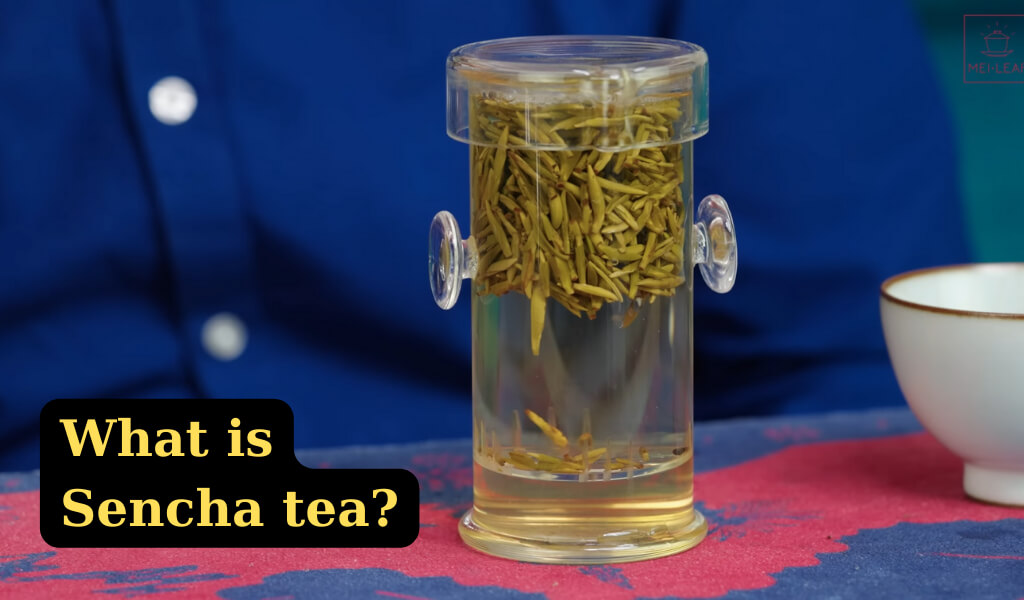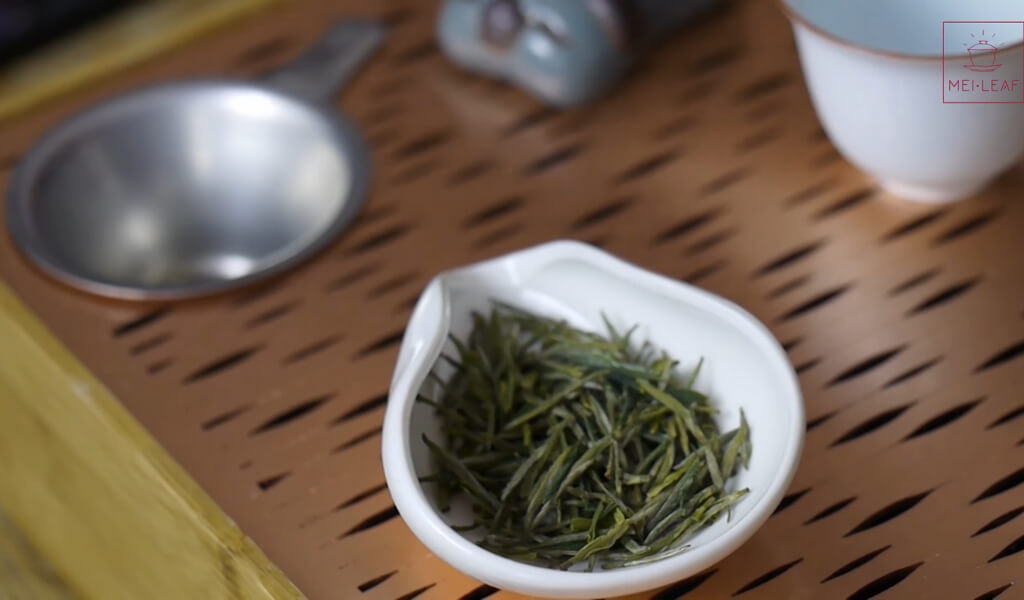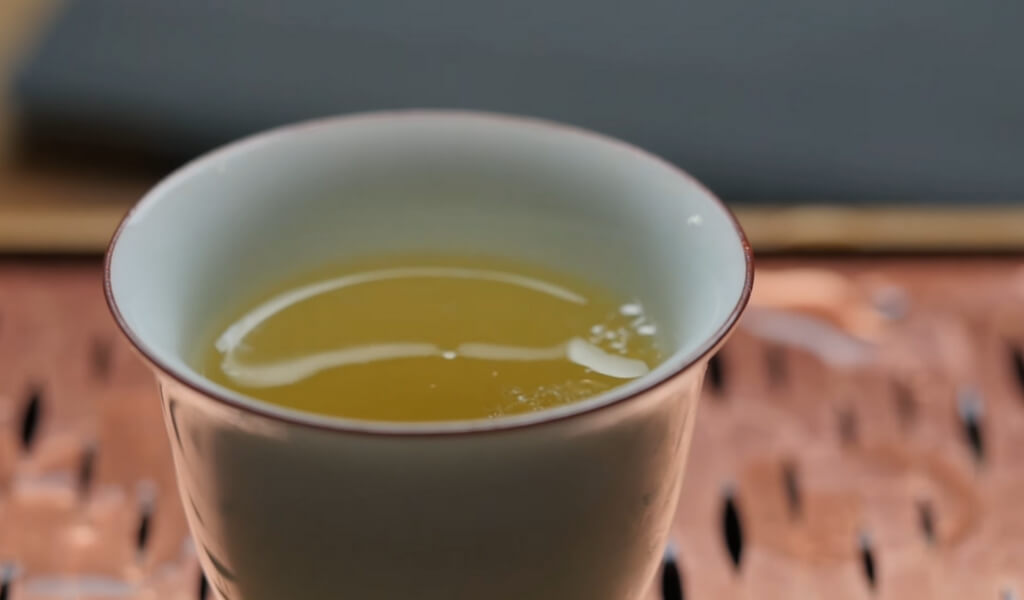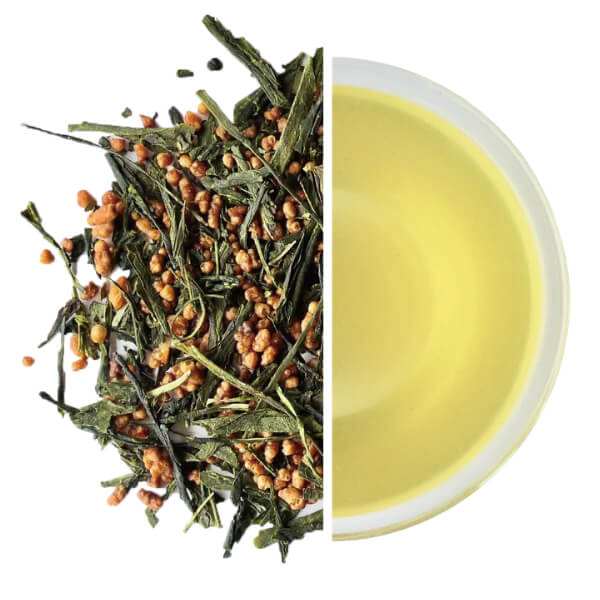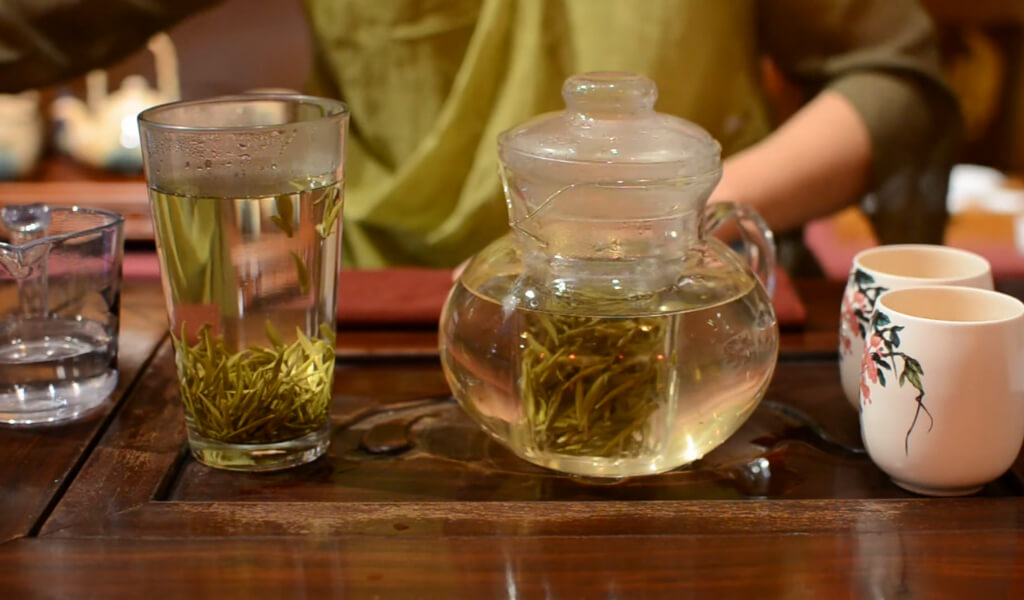As an avid tea enthusiast, I’ve found something incredibly soothing about fresh Sencha tea. This traditional Japanese green tea is more than just a pleasant beverage, it’s a cultural treasure with a rich history and an array of remarkable varieties.
I can’t wait to share the nuanced flavors, the caffeine content, and the potential benefits of drinking Sencha.
Together, we’ll dive into what sencha tea is made of, its various types, and what makes it a unique choice for tea lovers and health-conscious individuals.
Let’s embark on this journey into the world of Sencha tea.
Quotes of tea with You
“Drink your tea slowly and reverently, as if it as the axis on which the world revolves”
– Thich Nhat Hanh
What is Sencha tea?
Sencha tea is a variety of steamed Green tea (Non-Fermented Tea) cultivated from the delicate leaves of small-leaf Camellia sinensis, the classic tea bush.
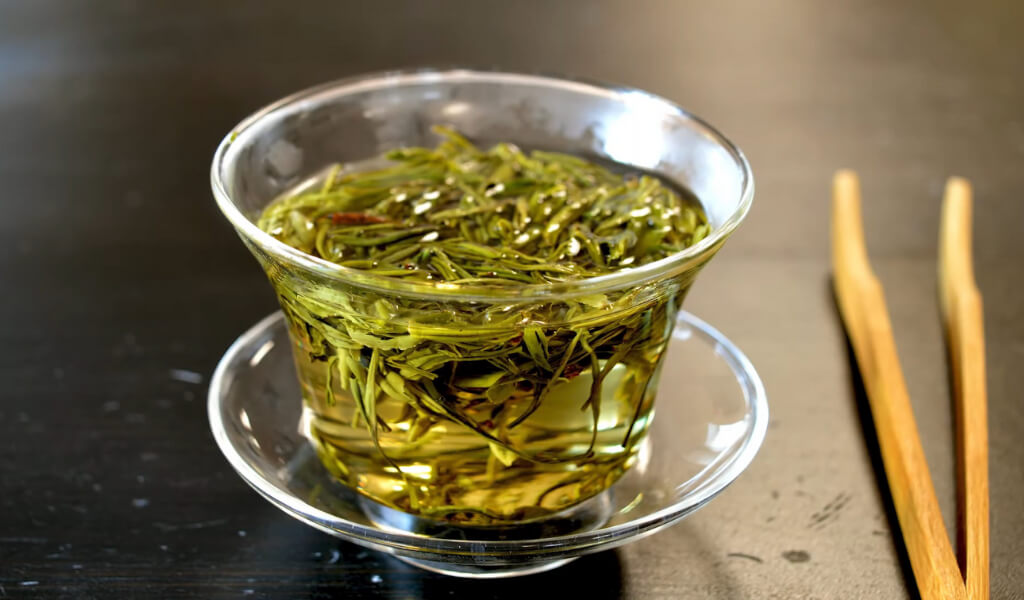
When I first tasted Japanese Sencha, its refreshing flavor reminded me of a lush green garden – a delightful medley of vegetal, green, seaweedy, and grassy notes. You’ll be surprised to know that the flavor profiles of Sencha can vary significantly depending on its type and brewing techniques.
Understanding the processing of Sencha tea is akin to decoding a centuries-old tradition. Fresh tea leaves are swiftly steamed, a crucial step that halts oxidation, encapsulating the vibrant green color and refreshing flavor that Sencha is celebrated for. Afterward, these leaves are carefully rolled, shaped, and dried, resulting in the final product we all cherish.
While Sencha tea finds its roots in Japan, its popularity has transcended borders. Sencha teas are produced in China, South Korea, and several other countries.
However, the Sencha tea varieties from these regions can greatly differ from traditional Japanese Sencha, mainly due to variations in tea plant species and the distinct processing techniques employed. These teas, known for their toasted, nutty flavor instead of the grassy Japanese Sencha, are often used for blending.
No matter where it’s from, every cup of Sencha tea promises a unique sensory experience!
Now that we’ve explored what Sencha is let’s take a journey back in time and delve into its rich history.
History of Sencha Green Tea
- “Sencha” was born as a method unique to Japan in the Edo period.
- In 1738, a farmer from Uji, Nagatani Soen, devised a new tea-making method. Sencha, which had been brown until then, could produce a bright green-light blue color through a new manufacturing method.
- Tea was introduced in China and developed uniquely in Japan as tea ceremony and sencha.
Let’s journey back to the late Kamakura period in Japan. This was when Zen temples began cultivating tea in their serene gardens. What started as a simple ritual within these peaceful settings soon found a wider audience among the samurai.
These warriors embraced tea not just as a beverage but also as a social medium. A unique game called “Tocha” emerged, with participants savoring tea and trying to guess its production area.
The tea that earned recognition during this time was called tencha or hikicha, brought from the Song Dynasty. It was primarily consumed for its health benefits and was yet to become a luxury item.
Fast forward to the Muromachi and Azuchi-Momoyama periods, and the picture started changing. Influential figures like Yoshimitsu Ashikaga and Hideyoshi Toyotomi began safeguarding Uji tea production. Subsequently, tea became a status symbol among samurai families.
During the Edo period, the emergence of Sencha, a uniquely Japanese style of tea, marked a significant development. It became closely intertwined with the samurai class and the traditional tea ceremony, becoming an integral part of their culture. Even common people began to embrace this luxurious beverage, particularly favoring the infused tea leaves known as Sencha.
An important milestone was in 1738, when Nagatani Soen, a farmer from Uji, transformed Sencha production. His innovative method, known as “Aosei Sencha Seiho,” turned Sencha from brown to bright green. This method quickly spread across Japan, making Soen the ‘father of Sencha.’
Then, in 1835, Kahee Yamamoto of the renowned Yamamotoyama tea company introduced a technique to produce gyokuro tea, popularizing infused tea even more.
Trade flourished during this period, especially between Uji, a major tea-producing region, and Edo. Despite becoming popular among the masses, tea, and Sencha, in particular, retained its luxurious appeal.
Having learned about its past, let’s discover the intricate process of creating Japanese sencha tea.
Read More:
- What Dragon’s Well Tea? Its Types, Benefits And Brewing Tips
- What is Biluochun Tea? The Chinese tea makes a strong impression
- What is Lu’An Melon Seed Tea? Origin, Characteristic & Health Benefits
- What is Lushan Yunwu Tea? Characteristic, Health Benefits & Brewing Tips
- What is Gunpowder Green Tea? Ultimate Benefits, Flavor & More
- What is Jasmine Tea? Origin, Tasting, Tea Made & Brewing
- Discover the Different Types of Green Tea: A Comprehensive Guide
- What is Bancha Tea? Ultimate Benefits Types & Brewing Tips
What is sencha tea made of
The primary processing goes through cultivation management → plucking → steaming →, rough rolling → kneading → middle kneading → regular kneading → drying.
It begins meticulously steaming and drying the tea leaves, contributing to Sencha’s distinctive flavor.
You might be surprised to know that in Japan, when people say ‘tea’, they often refer to Sencha – such is its significance. Indeed, Sencha represents 80% of the country’s green tea production.
The process entails carefully picking the top three leaves from the tea shoots, a technique I found in my recent reading of “The Book of Tea.” This level of craftsmanship guarantees the exceptional quality of Sencha.
You might be familiar with other Japanese teas such as Gyokuro and Bancha. While they are prepared and enjoyed similarly, Sencha has its distinct brewing method. Typically, it is steeped in hot water at temperatures ranging from 60-70°C, slightly higher than that used for Gyokuro, resulting in an enhanced and distinctive flavor profile.
Tracing back to Sencha’s origins, this tea style was initially introduced in China before finding its way to Japan during the Edo period.
Within the esteemed realm of Japanese tea ceremonies, there’s a dedication ceremony for Sencha known as Senchado – quite different from the Matcha ceremony, Hikicha.
Institutions like the Ogawa and Kagetsuan schools keep this tradition alive, imparting the intricate art of Sencha brewing to new generations. Isn’t it amazing how a single Sencha tea has such a rich history and tradition?
Now that we know how Sencha is made, it’s time to explore its diverse types.
Types of Sencha Green Tea
You’ll find several distinct types in the vast world of Sencha green tea. Their unique identities come from various factors, like when they’re harvested, how they’re processed, and where they’re grown. Interestingly, most are categorized based on their ‘mushi’ or steaming duration.
| Sencha Tea Type | Flavor Profile and Characteristics |
| Genmaicha |
Blend of Sencha green tea and toasted brown rice. Nutty flavor, low caffeine.
|
| Gyokuro |
Shade-grown for sweet, umami-rich taste. Full-bodied, steep at lower temp.
|
| Kukicha |
Made from twigs/stems. Light, slightly sweet flavor. Low caffeine, unique source.
|
| Hojicha |
Roasted Sencha, toasty, smoky, lower caffeine. Amber hue, suitable for evenings.
|
| Kabusecha |
Shade-grown for richer taste than Sencha, milder than Gyokuro. Flavorful option.
|
| Bancha |
Everyday green tea, robust, earthy, reliable. Affordable choice for beginners.
|
| Shincha |
First flush of spring, fresh, vibrant, high nutrients. Limited availability.
|
| Tamaryokucha |
Curled leaves, less bitter, aromatic, slightly sweeter. Distinct texture and taste.
|
| Kamaricha |
Pan-fired Sencha, reduced bitterness, sweet-savory taste. Resembles Chinese teas.
|
Genmaicha
Genmaicha is a unique blend of Sencha green tea and toasted brown rice. This fusion imparts a comforting, nutty flavor that’s hard to resist. If you’re looking for mild tea with a distinctive taste, Genmaicha should be on your radar. Its lower caffeine content makes it an excellent choice for late afternoon or evening sips.
Gyokuro
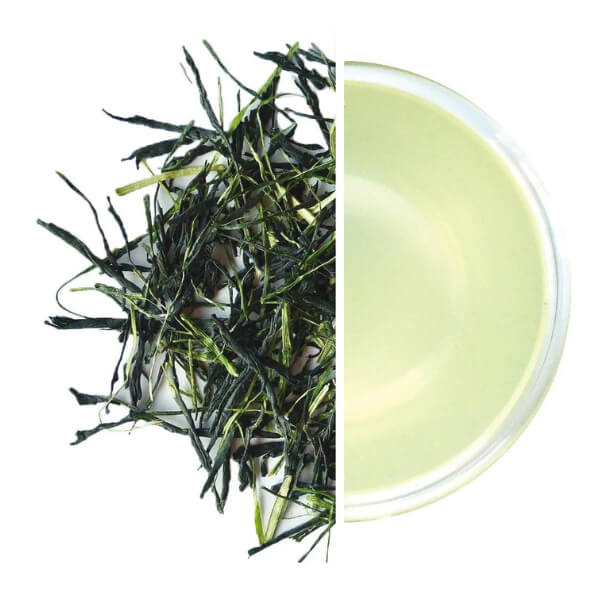
Often considered the pinnacle of Japanese green tea, Gyokuro is known for its sweet, umami-rich flavor. The tea plants are shaded for several weeks before harvest, boosting the levels of chlorophyll and amino acids in the leaves.
The result? A luxurious, full-bodied tea that’s a sensory delight. Remember, Gyokuro is steeped at a lower temperature, enhancing its unique flavor profile.
Kukicha
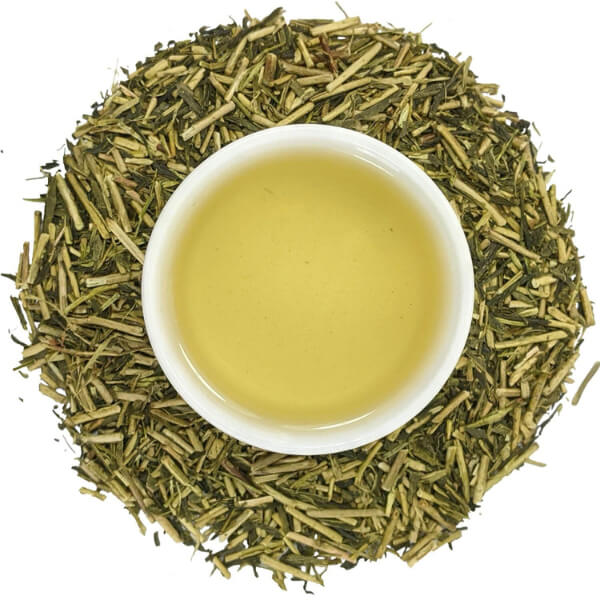
Kukicha, often referred to as ‘twig tea,’ is crafted using the branches and stems of the tea plant, which gives it a distinctive taste characterized by its mild and subtly sweet flavor. If you are mindful of your caffeine consumption but still enjoy Sencha green tea, Kukicha could be an ideal choice within the Sencha green tea family.
It’s a great example of how every part of the tea plant can be utilized to create something extraordinary.
Hojicha
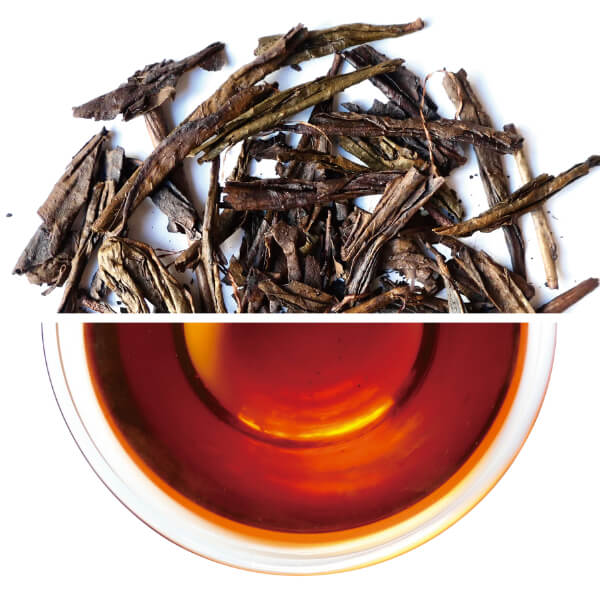
Roasted to perfection, Hojicha is a toasty take on Sencha green tea. The roasting process gives this tea warm, smoky notes and a beautiful amber hue. Because of the roasting, Hojicha has lower sencha caffeine content, making it a great option for those sensitive to caffeine or for a soothing evening brew.
Kabusecha
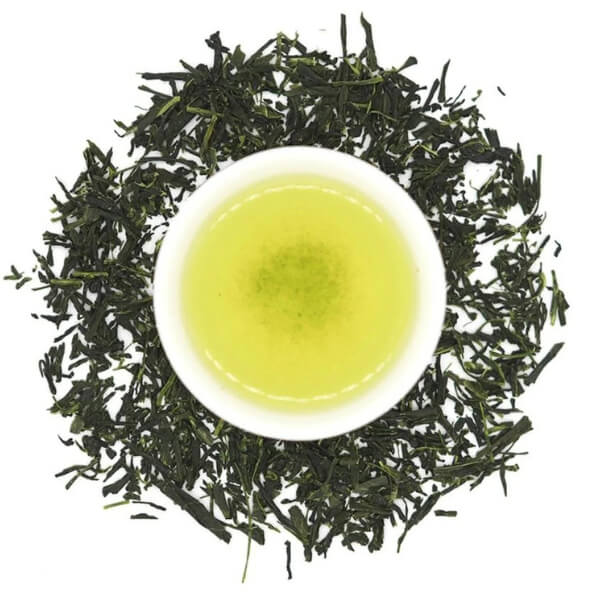
Kabusecha is often described as a midpoint between Sencha and Gyokuro. The tea leaves are shaded about a week before harvesting, giving it a richer taste than Sencha but milder than Gyokuro. If you’re seeking a Sencha with a little extra flavor depth, Kabusecha is a variety worth exploring.
Bancha
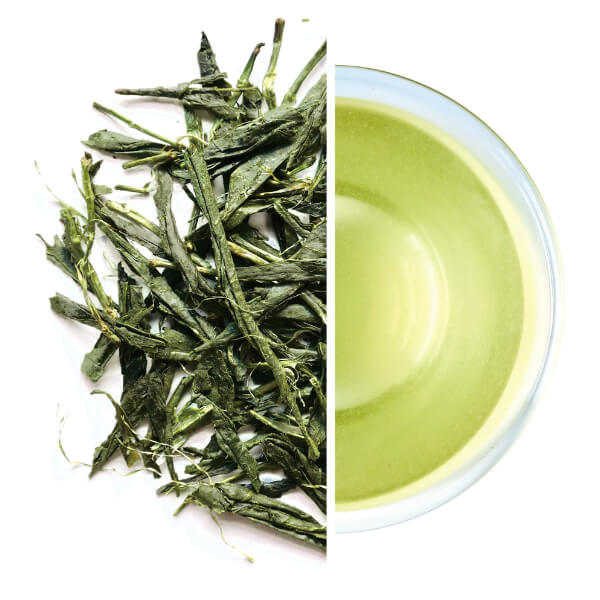
Bancha is the everyday green tea of Japan. It’s made from the larger, tougher leaves harvested later in the season. Its flavor is robust and earthy, and it’s known for being a reliable and affordable choice. If you’re just stepping into the world of Sencha, Bancha could be your perfect starting point.
Shincha
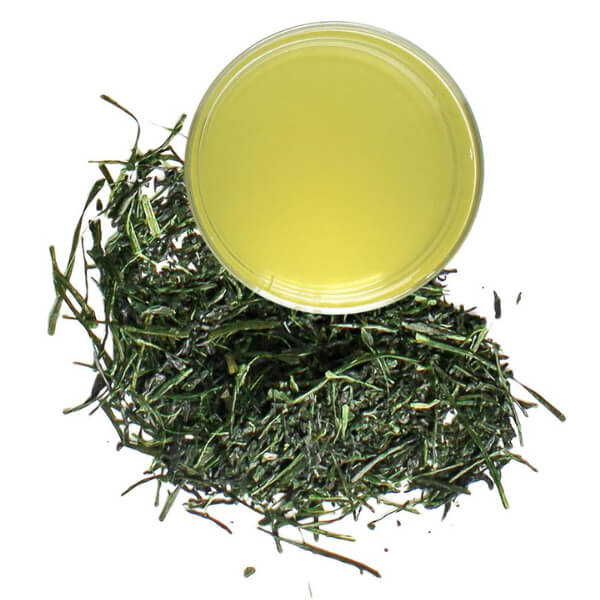
Shincha, or ‘new tea’, is Sencha’s first flush harvested in the spring. Tea enthusiasts eagerly await its fresh, vibrant flavor and higher nutrient content. Shincha has a limited availability window, making it a sought-after seasonal treat for green tea lovers.
Tamaryokucha
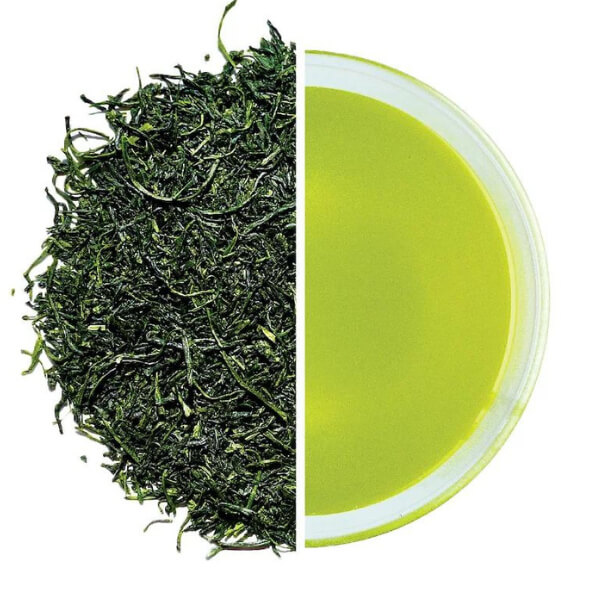
Also known as ‘curly tea’, Tamaryokucha is a type of Sencha with curled leaves. This tea is less bitter and more aromatic, making it a great option for those who prefer a slightly sweeter, less astringent tea. Its distinct taste and texture set it apart in Sencha green tea.
Kamaricha
Last but not least, we have Kamaricha, a pan-fired Sencha. This unique processing method produces a tea with reduced bitterness and a more pronounced sweet and savory taste. If you’re a fan of Chinese green teas, you’ll find Kamaricha’s flavor profile appealing due to the similar pan-firing process.
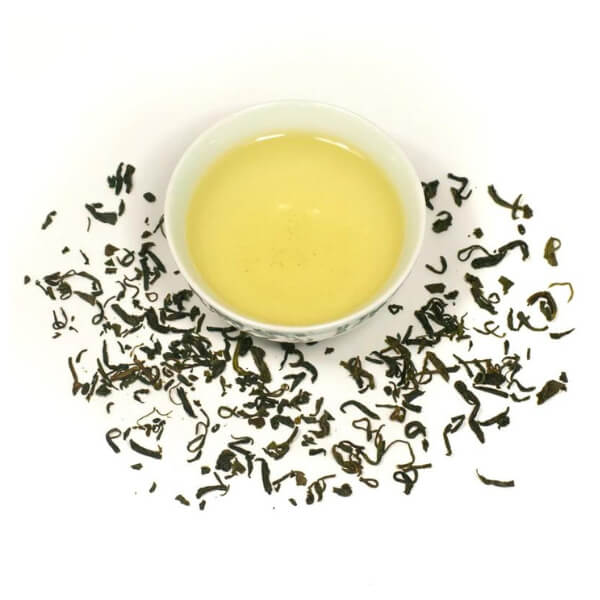
All these types of Sencha green tea offer unique flavors, making each sip a different experience. It’s incredible to see how different processing techniques can result in such diverse tea varieties, isn’t it?
Having met the different types of Sencha, let’s examine its various uses.
What is sencha tea used for?
Sencha tea is an integral part of Japanese culture, serving ceremonial and everyday purposes.
The tea ceremony, or ‘Senchado,’ prominently features Sencha, demonstrating the timeless respect for this green tea. Today, it’s a common household beverage enjoyed throughout the day, appreciated for its refreshing taste and potential health benefits.
Sencha tea is a natural source of antioxidants, notably catechins. These bioactive compounds are known for their potential to combat oxidative stress, which in turn may aid in preventing various diseases. Furthermore, Sencha is a rich source of vitamins and minerals, including vitamins C and E, adding to its nutritional profile.
How to Drink Sencha tea
Senchadō, the traditional Japanese art of brewing and serving Sencha green tea, fascinates me. It’s an intricate process, so meticulously detailed that whole tea halls are dedicated to mastering it. But, don’t worry! Enjoying a cup of Sencha at home is a lot simpler.
I recommend using a ratio of 1 teaspoon of tea per cup of pure, fresh water. Remember, Sencha prefers cooler temperatures, around 170 F. If you don’t have a thermometer, just heat the water until it’s beginning to simmer. The brewing time for Sencha is quite short, and it can vary. Some Sencha teas are perfect after a quick 15 to 30-second step, while others can stand for up to 2 minutes.
I’ve observed that loose-leaf tea tends to excel over tea bags, especially regarding Sencha. However, some high-quality tea bags are also made from whole leaves. If you choose to use them, adhere to the brewing guidelines provided on the packaging.
Be cautious not to steep the tea for too long or use excessively hot water, as this can result in your Sencha tea turning bitter and concealing its fresh, lively characteristics. If your tea includes specific brewing instructions, it’s advisable to follow them for the most enjoyable flavor.
If you’re brewing multiple infusions, try reducing your steep time and using slightly hotter water for the second infusion. For the third, aim to brew it slightly longer than the first. Enjoy your Sencha brewing journey!
After learning how to savor it, let’s examine the caffeine content in Sencha.
Sencha Tea Caffeine
Sencha, a type of tea, contains caffeine ranging from 75 milligrams to 80 milligrams per cup, similar to coffee. It is a popular summer beverage due to its lighter flavor than other Japanese green teas, such as matcha.
It’s akin to around 80 to 200 milligrams of caffeine in coffee. Thanks to a shorter brew time, most cups of Sencha tend to contain around 20 to 30 milligrams of caffeine.
Interestingly, Chinese Sencha, typically roasted, contains less caffeine than most Japanese green teas, while shade-grown green tea exhibits higher caffeine levels.
Moreover, a properly brewed Sencha isn’t highly acidic, but overstepping or using excessively hot water can introduce an astringent taste.
Buying and Storing Sencha Tea
To taste this exceptional beverage, you can easily find Sencha green tea in grocery stores, local Asian markets, health food stores, specialty tea shops, or even online. For an authentic Sencha experience, try finding fresh Sencha directly from Japan. Its vibrant green color and rolled leaves make it truly remarkable.
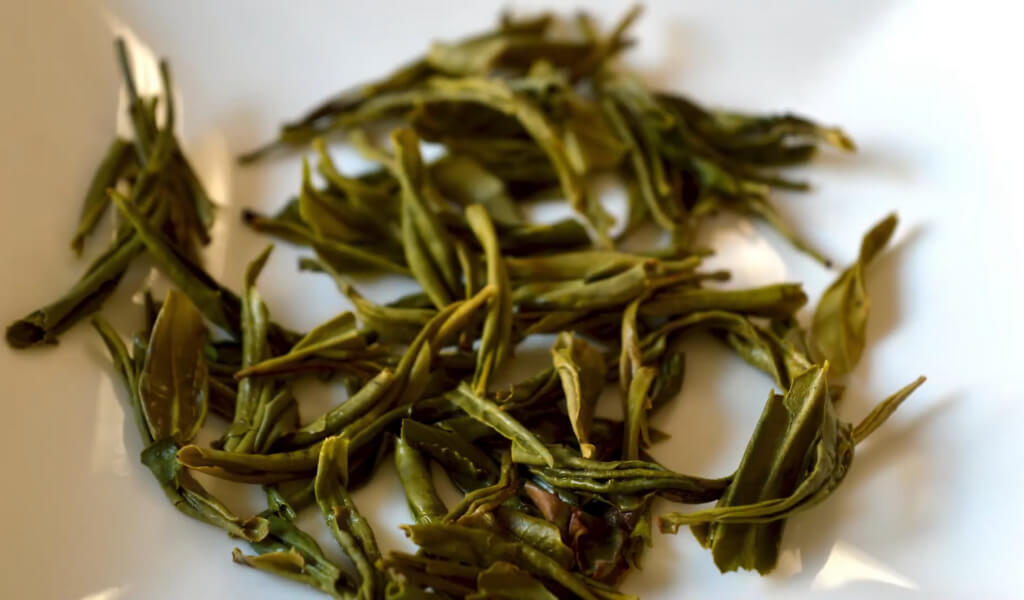
Once you’ve bought your Sencha, store it in an airtight container away from heat and light. As a rule of thumb, early-season Sencha is best consumed within a few months to enjoy its freshest flavor.
Don’t worry if you go past this timeframe—the tea won’t spoil, but it might lose some of its unique zest. However, if you’ve got a Chinese Sencha that has been roasted, it will stay flavorful for at least six months.
What Is the Difference Between Sencha and Matcha?
While Matcha and Sencha originate from the same plant, they exhibit distinct characteristics in color, taste, production process, brewing methods, drinking practices, and even harvesting techniques. These differences contribute to their unique identity and charm in Japanese green tea.
I have created a comparison table. Please refer below:
| Attribute | Sencha Tea | Matcha Tea |
| Color | Ranges from light yellow to bright green | Bright green |
| Taste | Grassy and earthy. Flavors evolve from the astringent, to slightly sweet, to savory |
Slightly astringent but notably sweeter and more sustained than Sencha
|
| Tea Production | Loose-leaf tea that has been steamed and rolled |
Made from the same leaves as Sencha but ground into a fine stone-ground powder that dissolves in water or milk
|
| Brewing | Brewed by steeping whole, rolled leaves in hot water |
Brewed by dissolving the powder in hot water or milk, then frothing the mixture with a whisk
|
| Drinking | A typical tea infusion, where you drink the liquid without ingesting the leaves |
The powder dissolves and is ingested as part of the drink, so technically you’re “eating” Matcha rather than just drinking it
|
| Harvesting | Derived from the top leaves and stems of the Camellia sinensis bush that have been grown in direct sunlight |
Harvested from tea leaves grown in the shade. Only the two leaves at the very tip of the shoot are used, representing the youngest part of the plant
|
Conclusion
We’ve delved into the vibrant world of Sencha tea, exploring its rich history, diverse types, and remarkable health benefits.
Understanding “what is Sencha tea” reveals how this Japanese brew, cherished for centuries, can be more than just a beverage – a journey of taste and tradition.
I hope you’ve enjoyed this enlightening journey as much as we enjoyed sharing it.
If you found this article helpful, we’d be grateful if you’d share it with your fellow tea lovers. Thanks for being a part of our tea-loving community!
Thanks for Spiritea Drinks
FAQs
Is Sencha healthier than Green tea?
Sencha is a type of green tea, so comparing them can be confusing. However, Sencha stands out because of its higher antioxidant content and unique preparation process that retains most nutrients.
Therefore, it’s potentially healthier than other types of green tea, although the health benefits generally align.
What is special about Sencha?
Sencha is unique due to its specific processing method—steaming, rolling, and drying—which retains its vibrant green color and fresh, grassy flavor. Also, it’s the most popular tea in Japan, and its refreshing taste sets it apart from other green teas.
Which is healthier, Sencha or Matcha?
Both Sencha and Matcha are healthy, each boasting a high level of antioxidants. The main difference is that when you drink Matcha, you consume the whole tea leaf in powdered form, so you ingest more nutrients than in Sencha, where you only consume the infusion.
What is the healthiest form of green tea?
Matcha is often considered the healthiest green tea because you consume the entire leaf, getting the maximum amount of antioxidants and nutrients. However, other forms like Sencha and Gyokuro are also high in beneficial compounds.
Is Japanese green tea better than regular green tea?
“Better” can be subjective as it largely depends on individual taste preferences. However, Japanese green teas like Sencha or Matcha are revered for their unique flavors, processing methods, and rich cultural history. The steaming process used in Japanese teas also tends to preserve more beneficial nutrients than the pan-firing method commonly used in other regions.
Is sencha caffeinated?
Yes, it contains caffeine in sencha green tea, although in lesser amounts than coffee. The caffeine content can vary depending on the brewing technique and type of Sencha. This moderate caffeine content, paired with L-theanine, an amino acid found in green tea, provides a more balanced, calm alertness, avoiding the jittery effect that can sometimes occur with coffee.
Does sencha tea have caffeine with a cooling effect?
Sencha is a type of tea with caffeine. A cup of Sencha can have around 75 milligrams of caffeine, similar to coffee which has about 80 milligrams per cup. It is a popular choice during the summer because it is lighter than other Japanese green teas such as matcha.
Is Sencha tea suitable for a keto diet?
Sencha tea is an excellent choice for those on a keto diet, as it contains zero carbohydrates. Plus, the natural compounds in Sencha tea may help boost metabolism and aid in weight management, aligning well with the objectives of a ketogenic diet.
Does Sencha tea contain Vitamin C?
Yes, Sencha tea is a good source of Vitamin C, a potent antioxidant that supports immune function, skin health, and a host of other bodily functions. However, the Vitamin C content may vary depending on the specific variety of Sencha tea.
How is Sencha Green Tea different from black tea?
While Sencha and black tea come from the Camellia Sinensis plant, they differ in processing methods and taste profiles. Sencha is a green tea type with a fresh, grassy flavor, while black tea is fully oxidized, giving it a deeper, more robust flavor.
I’m Shanna, creator of Spiritea Drinks. I’m all about teaching people to grow their own food, tea, cook what they harvest, and eat with the seasons.

